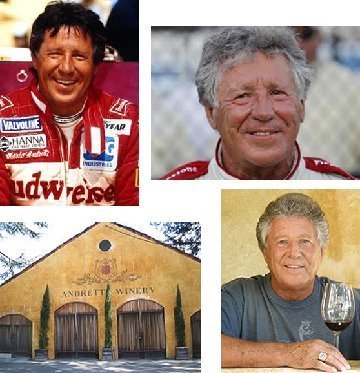Good 46º cloudy morning.
Yesterday the rain was sprinkles on and off. We topped at 56º.
Picture of the Day
Interesting about golf...
The reason why golf balls have dimples is a story of natural selection. Originally, golf balls were smooth; but golfers noticed that older balls that were beat up with nicks, bumps and slices in the cover seemed to fly farther.
A golfer's worst enemy may be divots, but his or her best friend may be dimples. It is the dimples on a golf ball that send it sailing farther down the fairway. There's a finite amount of space on the surface of a golf ball. According to rules, a golf ball has a diameter of just 1.68 inches. But just how many of those little dimples are there on golf balls? The number of dimples on today's golf balls ranges between 300 and 500, with variations between make and model of golf balls. The most common number of dimples on a golf ball’s surface is 336.
The origins of golf are unclear and much debated. However, it is generally accepted that modern golf developed in Scotland from the Middle Ages onwards. The game did not find international popularity until the late 19th century, when it spread into the rest of the United Kingdom and then to the British Empire and the United States.
The modern game of golf is generally considered to be a Scottish invention. A spokesman for The Royal and Ancient Golf Club of St Andrews, one of the oldest Scottish golf organisations, said "Stick and ball games have been around for many centuries, but golf as we know it today, played over 18 holes, clearly originated in Scotland." The word golf, or in Scots gowf [gʌuf], is usually thought to be a Scots alteration of Dutch "colf" or "colve" meaning "stick, "club", "bat", itself related to the Proto-Germanic language *kulth- as found in Old Norse kolfr meaning "bell clapper", and the German Kolben meaning "mace or club". The Dutch term Kolven refers to a related sport where the lowest number of strokes needed to hit a ball with a mallet into a hole determines the winner; according to the "Le grand dictionnaire françois-flamen" printed 1643 is stated the Dutch term to Flemish: "Kolf, zest Kolve; Kolfdrager, Sergeant; Kolf, Kolp, Goulfe."
17th-century America: In December 1650, near Fort Orange (modern city of Albany, New York), a group of four men were playing Kolf in pairs for points. On July 22, 1657, several men were cited and warned not to play Kolf on Sundays. On December 10, 1659, an ordinance was issued to prevent playing Kolf in the streets of Albany due to too many windows being broken.
Evidence of early golf in what is now the United States includes a 1739 record for a shipment of golf equipment to a William Wallace in Charleston, South Carolina, an advertisement published in the Royal Gazette of New York City in 1779 for golf clubs and balls, and the establishment of the South Carolina Golf Club in 1787 in Charleston. However, as in England, it was not until the late 19th century that golf started to become firmly established.
The evolution of golf can be explained by the development of the equipment used to play the game. Some of the most notable advancements in the game of golf have come from the development of the golf ball. The golf ball took on many different forms before the 1930s when the United States Golf Association (USGA) set standards for weight and size. These standards were later followed by a USGA regulation stating that the initial velocity of any golf ball cannot exceed 250 feet per second. Since this time, the golf ball has continued to develop and impact the way the game is played.
Another notable factor in the evolution of golf has been the development of golf clubs. The earliest golf clubs were made of wood that was readily available in the area. Over the years, hickory developed into the standard wood used for shafts and American persimmon became the choice of wood for the club head due to its hardness and strength. As the golf ball developed and became more durable with the introduction of the "gutty" around 1850, the club head was also allowed to develop, and a variety of iron headed clubs entered the game. The introduction of steel shafts began in the late 1890s, but their adoption by the governing bodies of golf was slow. In the early 1970s, shaft technology shifted again with the use of graphite for its lightweight and strength characteristics. The first metal "wood" was developed in the early 1980s, and metal eventually completely replaced wood due to its strength and versatility. The latest golf club technology employs the use of graphite shafts and lightweight titanium heads, which allows the club head to be made much larger than previously possible. The strength of these modern materials also allows the face of the club to be much thinner, which increases the spring-like effect of the club face on the ball, theoretically increasing the distance the ball travels.
From Mr. Food
The name of our 1 2 3 Salsa Dip says it all. Yep, with just three ingredients you can make this great-tasting Tex-Mex dip...in no time!
- 2 (8-ounce) packages cream cheese
- 1 cup medium salsa
- 1 tablespoon dried parsley flakes
- Preheat oven to 350º. Coat a 1-quart casserole or baking dish with cooking spray.
- In a medium bowl, with an electric beater, combine all ingredients and beat until smooth and well blended.
- Transfer to prepared baking dish and bake 30 minutes, or until light golden.
***Makes 3 cups dip.
Serve warm with tortilla chips or fresh cut veggies for dipping.
Historically this date......
1997 – An earthquake of magnitude 6.1 in Armenia and Azerbaijan kills around 1,100 people
1997 – An earthquake in northern Iran is responsible for about 3,000 deaths.
1997 – The North Hollywood shootout takes place, resulting in the injury of 19 people and the deaths of both perpetrators.
And births this date include....
His winery in Napa makes awesome wine!!!
All I know. Nuff said. Have a good Monday. Ciao.
xo Sue Mom Bobo
National Chocolate Souffle Day celebrates a delightfully delicious dessert on February 28th each year.
The word souffle is the past participle of the French verb souffler, which means “to blow up” or more loosely “puff up” which describes a souffle perfectly. A souffle is a lightly baked cake made with egg yolks and beaten egg whites that are combined with other ingredients to make the dish either a savory main dish or a sweet dessert.
Two essential components make up every souffle.
1. a French creme patisserie base/flavored cream sauce or puree
2. egg whites beaten to a soft peak meringue
A souffle gets its flavor from the base, and the egg whites provide the lift to puff it up. A variety of cheeses, jams, fruits, or chocolates can be baked into the base of the souffle. Many souffle bakers like to puncture the top of the souffle after removing it from the oven. Then they pour mouth-watering sauces onto it, such as chocolate, vanilla, or for a savory flavor cheese and herbs.
HOW TO OBSERVE
Souffles offer an opportunity to show off and invite friends to share in the celebration.
Here is a simple recipe;
https://www.realsimple.com/food-recipes/browse-all-recipes/chocolate-souffl








